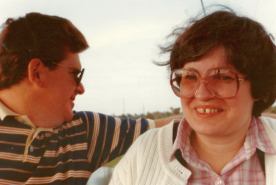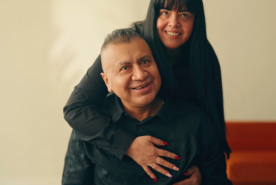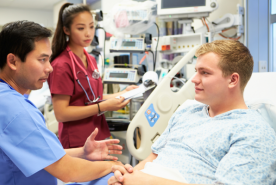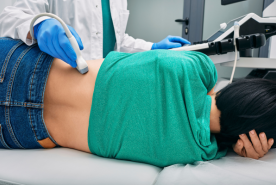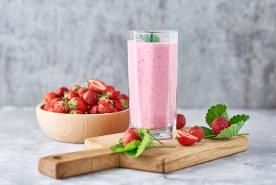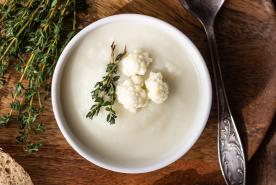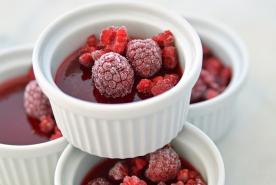August 12, 2014
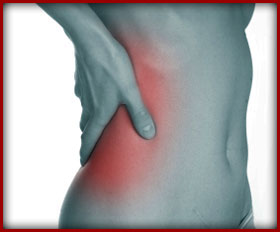 Kidney stones send half a million Americans to the emergency room every year, but there are ways to decrease your risk. To help you learn about symptoms, prevention tips and treatment, this month, the National Kidney Foundation answers the top 10 questions about kidney stones.
Kidney stones send half a million Americans to the emergency room every year, but there are ways to decrease your risk. To help you learn about symptoms, prevention tips and treatment, this month, the National Kidney Foundation answers the top 10 questions about kidney stones.
Check out our A to Z Guide for answers on many other kidney-related issues.
1. What is a kidney stone?
A kidney stone is a hard object that is made from chemicals in the urine. Urine has various wastes dissolved in it. When there is too much waste in too little liquid, crystals begin to form. The crystals attract other elements and join together to form a solid that will get larger unless it is passed out of the body with the urine. The stone-forming chemicals are calcium, oxalate, urate, cystine, xanthine and phosphate. Usually, these chemicals are eliminated in the urine by the body's master chemist: the kidney. In most people, having enough liquid washes them out or other chemicals in urine stop a stone from forming.
After it is formed, the stone may stay in the kidney or travel down the urinary tract into the ureter. Sometimes, tiny stones move through the body in the urine without causing too much pain. But stones that don't move may cause a back-up of urine in the kidney, ureter, the bladder or the urethra. This is what causes the pain.
2. What causes kidney stones to form?
Possible causes include drinking too little water, exercise (too much or too little), obesity, weight loss surgery or eating food with too much salt or sugar. Infections and family history might be important in some people. Eating too much fructose correlates with increasing risk of developing a kidney stone. Fructose can be found in table sugar and high fructose corn syrup. In some individuals, fructose can be metabolized into oxalate.
3. How common are kidney stones?
Each year, more than half a million people go to emergency rooms for kidney stone problems. lt is thought that one in ten people will have a kidney stone at some time in their lives.
The number of people in the United States with kidney stones has been increasing over the past 30 years. In the late 1970s, less than 4% of the population had had kidney stones; by the early 1990s, more than 5%. The rates are continuing to increase.
The peak age for stones is between 20 years and 50 years. White Americans are more prone to develop kidney stones than African Americans, and men are much more likely to develop stones than women. Other diseases like high blood pressure, diabetes, obesity, osteoporosis, chronic diarrhea, or kidney cysts might increase the risk of stones. Diabetes increases the risk of developing kidney stones, especially in younger women. Only about 25% of kidney stones occur in people with a family history of stones. After bariatric (weight loss) surgery, in which the digestive tract is altered, kidney stones are more common as levels of oxylate are much higher after this surgery.
4. What are the symptoms of a kidney stone?
Some kidney stones are as small as a grain of sand. Others are as large as a pebble. A few are as large as a golf ball! As a general rule, the larger the stone, the more noticeable are the symptoms.
The symptoms could be one or more of the following:
- severe pain on either side of your lower back
- vague pain or stomach ache that doesn't go away
- blood in the urine
- nausea or vomiting
- fever and chills
- urine that smells bad or looks cloudy
The kidney stone starts to hurt when it causes irritation or blockage. This builds rapidly to extreme pain. In most cases, kidney stones pass without causing damage, but they usually cause a lot of pain. Pain relievers may be the only treatment needed for small stones. Other treatment may be needed, especially for those stones that cause lasting symptoms or other complications. In severe cases, however, surgery may be required.
5. How are stones diagnosed?
Diagnosis of a kidney stone starts with a medical history, physical examination, and imaging tests. Your doctors will want to know the exact size and shape of the kidney stones. This can be done with a high resolution CT scan from the kidneys down to the bladder or an x-ray called a "KUB x-ray'' (kidney-ureter-bladder x-ray) which will show the size of the stone and its position. The KUB x-ray is often obtained by the surgeons to determine if the stone is suitable for shock wave treatment. The KUB test may be used to monitor your stone before and after treatment, but the CT scan is usually preferred for diagnosis. In some people, doctors will also order an intravenous pyelogram or lVP, a special type of X- ray of the urinary system that is taken after injecting a dye.
6. Why does the doctor need to examine the contents of the stone?
There are four types of stones. Studying the stone can help understand why you have it and how to reduce the risk of further stones. The most common type of stone contains calcium. Calcium is a normal part of a healthy diet. The kidney usually removes extra calcium that the body doesn't need. Often people with stones keep too much calcium. This calcium combines with waste products like oxylate to form a stone. The most common combination is called calcium oxalate.
Less common types of stones are: infection-related stones, containing magnesium and ammonia called struvite stones and acid-related stones, called uric acid stones, which might be related to eating too much protein. The rarest type of stone is a cvstine stone that tends to run in families.
7. How are kidney stones treated?
You may be asked to drink a lot of water. Doctors try to let the stone pass without surgery. But if it is too large, if it blocks the flow of urine, or if there is a sign of infection, it is removed with surgery.
Shock-wave lithotripsy is a noninvasive procedure that uses high-energy sound waves to blast the stones into fragments that are then more easily passed out in the urine. In ureteroscopy, an endoscope is inserted through the ureter to retrieve or obliterate the stone. Rarely, for very large or complicated stones, doctors will use percutaneous nephrolithotomy/nephrolithotripsy.
8. Are there any long term consequences of having a kidney stone?
Kidney stones increase the risk of developing chronic kidney disease. If you have had one stone, you are at increased risk of having another stone. Those who have developed one stone are at approximately 50% risk for developing another within 5 to 7 years.
9. What can I do to decrease my risk of having kidney stones?
Drinking enough fluid will help keep your urine less concentrated with waste products. Darker urine is more concentrated, so your urine should appear very light yellow to clear if you are well hydrated. Most of the fluid you drink should be water. Water is better than soda, sports drinks or coffee/tea. If you exercise or if it is hot outside, you should drink more. Sugar and high-fructose corn syrup should be limited to small quantities.
You can reduce excess salt in your diet and, if overweight, try to get to a normal weight. Keep in mind, high-protein weight loss diets can add to the stone risk. Protein is found in beef, chicken, pork, fish, milk and eggs. You need protein (50 grams a day), but it needs to be part of a balanced diet.
Some herbal substances are promoted as helping prevent stones. You should know that there is insufficient published medical evidence to support the use of any herb or supplement in preventing stones.
See your doctor and/or a registered dietitian about making diet changes if you have had a stone or think you could be at increased risk for getting a kidney stone. To guide you, they need to know your medical history and the food you eat. Here are some questions you might ask:
- What food may cause a kidney stone?
- Should I take vitamin and mineral supplements?
- What beverages are good choices for me?
10. Do children get kidney stones?
Kidney stones are found in children as young as 5 years. In fact, this problem is so common in children that some hospitals conduct ‘stone' clinics for pediatric patients. The increase in the United States has been attributed to several factors, mostly related to food choices. The two most important reasons are not drinking enough fluids and eating foods that are high in salt. Kids should eat less salty potato chips and French fries. There are other salty foods: sandwich meats; canned soups; packaged meals; and even sports drinks. Sodas can also increase risk of stones due to the high sucrose content (a kind of sugar).
Drinking water is important, but how do you get kids to drink more water? Parents can send a water bottle with lunch to school, instead of a juice box or sports drink. Make a habit when they are very young to serve water with every meal and snack. Kids like ice water, especially when the ice is made in a tray of shapes (like stars or hearts). Don't wait for your child to tell you he or she is thirsty. They may not realize it. Bring water to sports activities and to the park. Have a water bottle in the car on every trip.
In some children, being overweight adds to the risk. In others, being very active in sports and not drinking water adds to the risk. In still others, regularly eating foods high in salt adds to the risk. Encourage your kids to drink milk and eat yogurt. Dairy products help because calcium binds with oxalate before it gets into the kidneys.
Click here to support NKF's patient and public education efforts.

